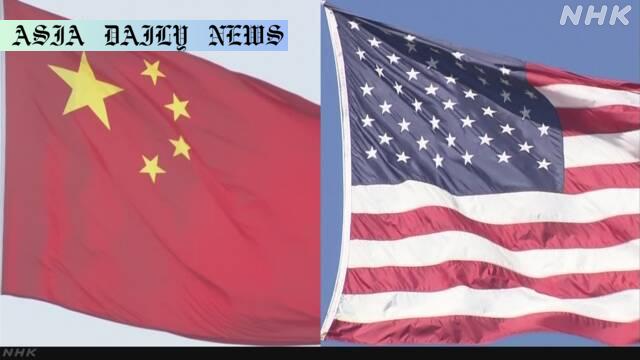Tariff Tensions: US and China have started high-level trade talks in Switzerland, aiming to address the reciprocal tariffs conflict.
US and China are holding high-level talks in Switzerland addressing tariff disputes.
The meeting addresses reciprocal tariffs of 145% by the US, 125% by China.
Key participants include Scott Bessent, Jamieson Greer, and He Lifeng.
China is also addressing fentanyl and chemical flow issues.

Introduction: The Start of US-China Trade Talks
The United States and China have initiated two days of high-level trade talks in Geneva, Switzerland, marking the first such discussions since the imposition of substantial reciprocal tariffs by both nations. These talks, held under growing global economic uncertainties, focus on easing the trade confrontation that has strained relations between the two economic superpowers. Representing the United States is Treasury Secretary Scott Bessent, alongside Trade Representative Jamieson Greer. Vice Premier He Lifeng, leading China’s economic policy, represents Beijing. These discussions are critical in addressing issues ranging from tariffs to the flow of chemicals like fentanyl.
The Significance of the Reciprocal Tariffs
The tariffs in question have caused significant disruptions. The United States imposed additional tariffs of 145% on Chinese goods, which led to swift retaliatory measures from Beijing, imposing 125% levies on American imports. These tariffs have not only affected direct trade between the two nations but have created ripple effects across global supply chains, increasing production costs and impacting consumers. Both nations are under immense pressure to consider mutual concessions that could de-escalate these tensions, potentially fostering a more cooperative trade environment.
Addressing Fentanyl and Broader Policy Implications
Adding another layer of complexity, China has sent Wang Xiaohong, its minister of public security, to participate in these talks. This signals an important shift in focus to include discussions about the flow of fentanyl and other chemicals into the United States, an issue that has fueled a devastating opioid crisis. By addressing this alongside tariffs, it is evident that the discussions aim to tackle both economic and public health challenges.
Challenges and Expectations
The path to resolving these issues is fraught with challenges. Both countries remain firmly entrenched in their respective positions, and any agreements are expected to require extensive negotiation. The two-day meeting offers an opening to find common ground, but experts caution against expecting immediate breakthroughs. Observers are closely watching to see if the discussions pave the way for further negotiations or if they devolve into additional rounds of tit-for-tat measures.
Potential Impacts on the Global Economy
The outcome of these talks has significant implications for the global economy. Prolonged trade tensions between the United States and China could weaken investor confidence, disrupt global trade, and slow economic growth. Conversely, a resolution could stabilize markets, foster cooperation, and strengthen bilateral relations. Businesses, governments, and all stakeholders are hopeful that these discussions will yield productive outcomes that go beyond symbolic gestures.
Conclusion: Hope Amid Challenges
While the current talks highlight the complexity of US-China relations, they also represent an opportunity to foster mutual understanding and cooperation. As the discussions unfold, the world watches with keen interest, hopeful that the two nations can bridge their divides. The stakes are high, not just for the two countries involved, but for the global community that relies on a stable economic relationship between these superpowers. As the talks conclude, the outcomes will likely set the tone for the future of US-China relations, making this a pivotal moment in global diplomacy.



Commentary
The Complexity of US-China Relations
The ongoing trade talks between the United States and China underscore the complexities of their economic and diplomatic relationship. With reciprocal tariffs impacting a vast range of goods and creating ripple effects across the globe, the stakes of these discussions are incredibly high. It is encouraging to see both sides engaging at a high level, as their disputes not only affect their respective nations but also the broader global economy that depends on their stability. This moment in trade diplomacy offers a glimmer of hope amid prolonged tensions.
Beyond Tariffs: The Inclusion of Fentanyl
One of the surprising elements of these talks is the inclusion of discussions about the flow of fentanyl and other chemicals into the United States from China. This issue highlights how interconnected modern trade and public health challenges have become. By addressing this alongside the broader tariff conflict, both nations demonstrate a willingness to tackle deeper issues that affect citizens at a human level. This addition to the agenda signals a potentially significant shift in the nature of US-China negotiations, one that prioritizes multifaceted cooperation.
Hopeful Outcomes for a Troubled Partnership
While many remain cautious about the potential outcomes of these discussions, there is undeniable optimism that progress can be made, however incremental. Both sides have much to gain from even modest agreements that ease the current tension. Moreover, these talks could pave the way for more frequent high-level dialogues, fostering a more collaborative approach to managing their complicated relationship. As the talks wrap up, the world will wait with bated breath to see if this marks a turning point in the ongoing saga of US-China relations or just another chapter in their contentious history.